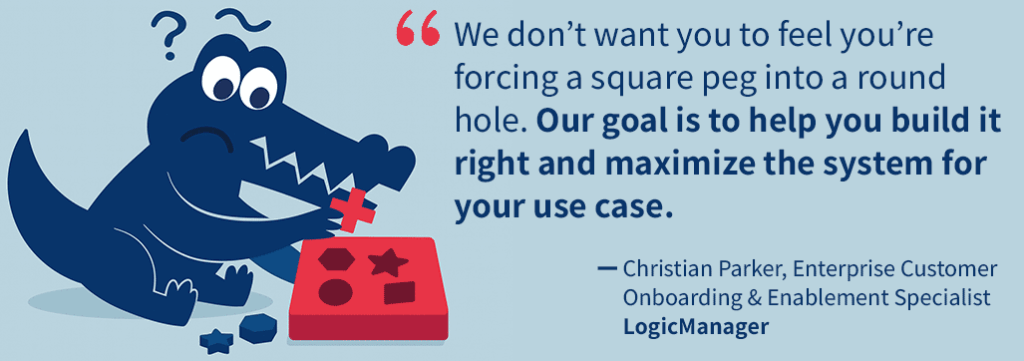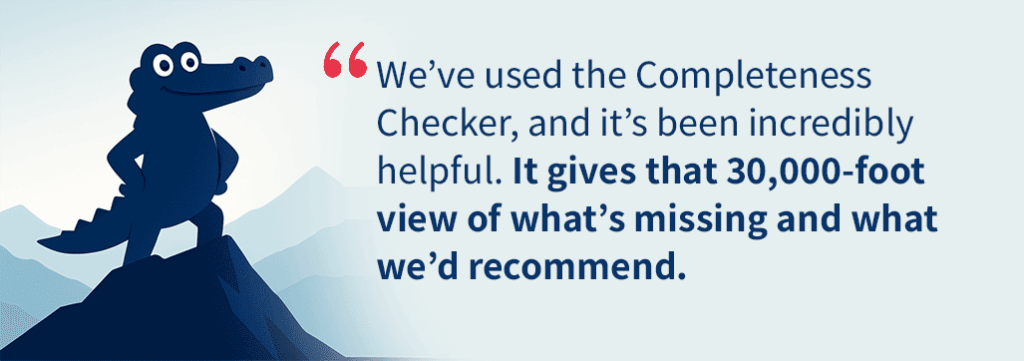Success Story: Building Confidence and Control in Insurance Risk Management
Last Updated: October 2, 2025
In today’s insurance industry, the stakes couldn’t be higher. With complex regulations, evolving vendor landscapes, and ever-expanding compliance requirements, insurers are under immense pressure to manage risk with precision and confidence. One mid-sized insurance company has been tackling this challenge head-on, turning to LogicManager as its single source of truth for governance, vendor oversight, and financial controls.
This story highlights their journey—how they’ve used LogicManager to bring order to complexity, strengthen accountability, and lay the foundation for future growth.
The Challenge: Complexity on All Fronts
Like many insurers, the organization faced pressure from multiple angles:
- Vendor Management Risks: With a large network of third-party providers, oversight was essential to protecting operations, reputation, and compliance.
- Financial Controls (MAR Program): Much like SOX compliance, their Management’s Assessment of Risk (MAR) program required structured testing, risk assessments, and evidence tracking.
- Growing Demands Over Time: While the insurer initially set up LogicManager for foundational governance needs, the natural evolution of their business required them to manage more complexity, integrate additional processes, and unlock deeper reporting capabilities.
The result was an environment where staff often worked diligently within their silos, but the bigger picture of enterprise-wide risk remained obscured. Without stronger connections between risks, controls, and outcomes, inefficiencies and reporting challenges persisted.

The Turning Point: Leveraging LogicManager for Assurance
When the insurer expanded their use of LogicManager, the initial focus was on vendor management and MAR testing. They began consolidating critical tasks, reviews, and evidence into the platform. This centralized approach immediately improved visibility and accountability.
For example:
- Risk Assessments Feed Testing: Risk assessments conducted across business areas now drive task creation for MAR control testing, ensuring the program follows a consistent process from start to finish.
- Review and Audit Trails: Every test and review step is documented within LogicManager, creating a clear record for internal stakeholders and external auditors alike.
- Vendor Oversight: Through LogicManager’s Taxonomy and Workflows, the team hosts and manages their third-party data, enabling structured processes for onboarding, due diligence, and monitoring.
This shift allowed the insurer to move away from manual workarounds and spreadsheets, instead creating a living system of record that grows with the business.
Scaling with Complexity: From Basics to Enterprise Risk Management
Early on, the insurer used LogicManager primarily to meet their immediate compliance and vendor management needs. But as regulatory expectations grew and risks became more interconnected, they required a more robust framework.
LogicManager’s Enterprise Risk Management (ERM) capabilities provided that framework. By organizing core processes in taxonomy, mapping MAR narratives, and referencing business functions such as HR, IT, and Legal, the insurer began to connect risks across the enterprise. This laid the groundwork for ERM by showing how a risk in one area could ripple outward to others.
Rather than overhauling everything at once, the insurer adopted a step-by-step approach:
- Start with Core Processes: Building departmental hierarchies to capture critical business functions.
- Map Narratives: Linking MAR controls and narratives into these processes.
- Expand References Gradually: Testing pilots, such as linking corporate legal risks, to understand how richer reporting would look.
This incremental strategy allowed the insurer to grow their program alongside business needs, steadily evolving from compliance to true ERM maturity.

Unlocking More Value with LogicManager’s Risk Intelligence Tools
Beyond taxonomy and plans, the insurer also began exploring LogicManager’s broader Risk Intelligence Suite:
- Completeness Checker: By running completeness reports, the insurer could instantly see gaps in their risk library, assessments, and testing coverage. Instead of manually cross-checking spreadsheets, the team gained a 30,000-foot view of what was missing and where improvements were needed.
- LogicManager Expert (LMX): While initial use was limited, the organization began to see the potential of LMX as an always-available advisor. Whether staff needed a quick “how-to” for configuring a report, or deeper context about why referencing core processes mattered, LMX could provide both practical and strategic answers.
These capabilities not only streamlined day-to-day tasks but also boosted confidence across the team. Employees no longer felt like they were “putting a square peg in a round hole”—instead, they had clarity that their processes aligned with best practices and industry standards.
The Results: Assurance, Engagement, and Confidence
The insurer’s use of LogicManager has already delivered tangible results:
- Clearer Accountability: With structured testing and review processes in the MAR program, leaders have greater assurance that controls are being executed and reviewed consistently.
- Improved Vendor Oversight: By centralizing third-party workflows, the company has reduced risk exposure from vendors and improved visibility across departments.
- Data-Driven Confidence: Tools like the Completeness Checker ensure that teams know where gaps exist, eliminating the uncertainty of manual reconciliations.
- ERM Maturity Path: By organizing processes and references, the insurer is progressing toward a connected ERM program that reveals how risks across functions are interrelated.
Perhaps most importantly, the team feels more engaged and empowered. With LogicManager, they no longer struggle to prove the value of their risk work—they can demonstrate it with reports, data, and a clear line of sight into how risk ripples across the organization.
Looking Ahead: From Compliance to Competitive Advantage
The insurer’s story illustrates a broader truth about risk management in today’s business climate: what begins as a compliance requirement often evolves into a source of strategic value.
By investing in structured processes, connected risk data, and intelligence-driven tools, this insurer is positioning itself not only to meet regulatory demands but also to anticipate and respond to risks faster than competitors.
As they continue building out their taxonomy, referencing across departments, and leveraging out-of-the-box reports, the company will gain an even deeper understanding of how risks, controls, and vendors interconnect. That knowledge will make governance not just a safeguard, but a competitive advantage.
Conclusion
Risk management in the insurance industry is complex—but complexity doesn’t have to mean confusion. With LogicManager, this insurer has taken control of vendor oversight, strengthened financial controls, and built a foundation for enterprise risk management.
They’ve shown that by approaching the work step by step—starting with core processes, leveraging completeness checks, and tapping into the knowledge embedded in LMX—it’s possible to transform uncertainty into confidence.
And in an industry where trust is everything, that confidence is invaluable.
